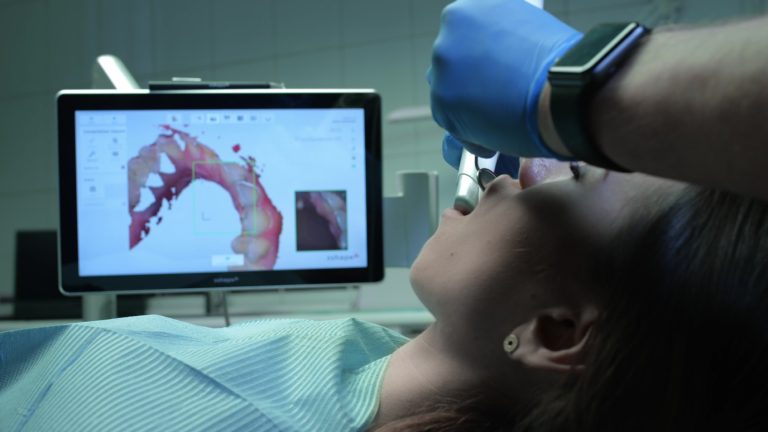In a recent study published in the journal BDJ Open, the researchers proposed an integrated robotic system called high-precision all-in-one dual-arm robot for oral implant surgery (HADAROIS) that can perform oral implant surgery with high efficiency and safety. This solution could help advance the field of dental implantology.
Record
Oral implant surgery, a procedure to replace missing teeth with artificial ones anchored to the jawbone, significantly enhances both the function and aesthetics of the mouth. This operation requires meticulous precision and accuracy when placing the implant.
Recent research has focused on incorporating medical robots into oral implant surgery to enhance accuracy and improve convenience. Medical robots are sophisticated devices designed to perform surgical tasks, either autonomously or under the supervision of human surgeons. The use of these robots brings many advantages, including increased accuracy, improved efficiency, the ability to perform minimally invasive procedures, and increased safety.
Despite these benefits, current robotic systems designed for oral implant surgery face several challenges. These include extensive preoperative preparation, complex functional requirements, high cost of implementation, and susceptibility to occlusion or interference during surgical procedures, which may complicate the procedure and affect outcomes.
About the Research
In this article, the authors presented HADAROIS, a new navigation and placement system for oral implant surgery. This system consisted of a support body, a control panel, two robotic arms and an image capture device. The upper arm held the surgical tool, known as an “oral implant handle,” while the lower arm housed a tiny multi-eye gaze-tracking camera. The system also included three key modules to control the movement and operation of the robotic arms: the off-target tracking module (OTTM), the planting plan development module (PPDM) and the path shaping module (PFM).
OTTM has been instrumental in positioning and monitoring the target implant position during oral implant surgeries. It was specifically designed to locate and navigate around obstructions caused by medical instruments, the human body, or nearby organs, ensuring clear access to the implant site.
PPDM (Patient Specific Design Data Module) used data from computed tomography (CT) scans to create an optimal surgical plan tailored to the patient’s unique anatomy. The role of this module was critical in planning precise implant sites based on detailed internal images.
HADAROIS (High Accuracy Dual-Arm Robotic Oral Implant System) took advantage of cone beam CT (CBCT) imaging to gather precise anatomical details of the patient’s oral cavity. Using this information, HADAROIS created an optimal plan for implant placement. The PFM (Positioning and Feedback Module) was responsible for determining the posture, position and movement speed of the robotic arms, ensuring that their coordinated movements were synchronized and accurate during surgery. This coordination was vital to the smooth execution of complex surgical operations.
Designed to streamline surgical workflow, HADAROIS aimed to reduce preoperative preparation times and simplify the operation process by incorporating dual robotic arms and eliminating the need for manual calibration or registration. This system enabled dynamic adjustments to the surgical plan, allowing for real-time feedback and surgical manipulations by the surgeon.
With these innovations, HADAROIS was expected to significantly improve the accuracy, efficiency and safety of oral implant surgery, making it a promising advance in robotic surgical technologies.
Research results
The researchers evaluated the accuracy and feasibility of the system through simulation experiments and clinical trials. In the simulation experiments, they used five different dental models and performed ten implant procedures. They measured the angle and entry point errors of implant placement and found that the mean angular error was 1.54° and the mean entry point error was 0.33 mm, both within the clinically acceptable range.
The study compared these results with other published studies and found that the system achieved the lowest angular error and entry point error among all studies. In clinical trials, HADAROIS was used to perform oral implant procedures in six patients, with accuracy measured using CBCT images.
The mean angular error was 2.1° and the mean entry point error was 0.39 mm, which was also within the clinically acceptable range. In addition, the study demonstrated excellent precision and placement capabilities in clinical practice, and patients were satisfied with the esthetic and functional results of implant surgery.
Applications
Potential applications of the system in oral implant surgery are significant as it provides high-precision navigation and positioning for implant placement. By reducing the time required for preoperative preparation and simplifying the operation process, it not only enhances the efficiency but also increases the safety of surgical operations.
In addition, its ability to offer real-time guidance and adjustments during the procedure enhances the flexibility and adaptability of the surgical procedure. This dynamic capability allows surgeons to make immediate modifications based on intraoperative findings, which is a significant advance over more static surgical techniques.
In addition, the system is designed to improve patient outcomes and experiences. By minimizing surgical trauma, it promotes faster recovery and reduces discomfort, leading to higher patient satisfaction. Accurate placement of implants also ensures better aesthetic and functional results, further enhancing overall treatment success and patient well-being.
conclusion
The new system has been shown to effectively improve oral implant surgery by overcoming the limitations of current robotic systems, such as prolonged preoperative preparation, complex usability, increased cost, and vulnerability to occlusion or interference. The system demonstrated high accuracy, efficiency and safety in both simulated and clinical settings.
Looking to the future, the authors suggest further improvements and optimizations to the system. They also emphasize the need for additional clinical trials to confirm its effectiveness and safety. In addition, the system has promising applications in other areas of oral surgery, such as orthognathic surgery, maxillofacial trauma surgery, and oral tumor surgery.
Journal report
Tang, G., Liu, S., Sun, M. et al. High precision all-in-one dual robotic arm strategy in oral implant surgery. BDJ Open 1043 (2024). https://doi.org/10.1038/s41405-024-00231-6, https://www.nature.com/articles/s41405-024-00231-6

